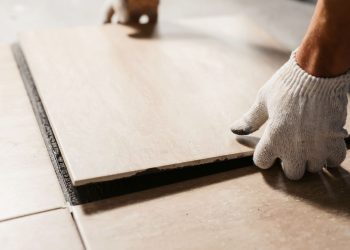A burst pipe can cause major damage to your house and belongings. This is a relatively common occurrence during the winter. Understanding how and why it occurs can help you avoid a problem.
Why Pipes Burst
If the water inside pipes freezes during the winter and forms ice, it puts pressure on the pipes. If the pipes can’t handle the pressure inside them, they can burst. Any part of a pipe can burst, but it’s most likely to happen at weak joints.
Pipes generally begin to freeze when the temperature outside is 20 degrees Fahrenheit or lower for at least six hours. In areas that don’t get much cold weather, pipes may not be well insulated and they may begin to freeze sooner.
How to Deal with a Frozen Pipe
If a pipe is frozen, you may notice that when you turn on the faucet, water only comes out in a small trickle or doesn’t come out at all. A frozen pipe may also have ice around it and may appear swollen.
If the pipe hasn’t burst and you can easily access it, you may be able to thaw it yourself by placing a heater near it or by using a hair dryer. Another option is to wrap electrical heat tape around the pipe. You’re better off hiring a professional if you can’t find or reach the area where the pipe is frozen.
How to Keep Your Pipes from Freezing
Pipes are most likely to freeze in unheated and poorly insulated areas, such as the attic, garage, basement and crawlspace. Pipes that are located near exterior walls or windows are exposed to cold temperatures and more likely to freeze than interior pipes. Exposing those pipes to warm air can prevent them from freezing. If a sink is located on an exterior wall, simply opening the cabinet doors can do the trick.
Insulating pipes inside your house can keep them from freezing. You can buy strips of foam insulation and cut them to the appropriate size. You can also tie downpipe heating cable to pipes that are at risk of freezing.
Openings in walls and the roof can allow cold air to enter your house. Look for any gaps around vents, pipes and electrical wiring and use caulk or insulation to keep cold air out.
If the temperature outside is extremely cold, keep the water running slowly from one or two faucets. That will keep water moving continuously through the plumbing system and prevent freezing.
Turn off the water valve to an outdoor spigot, drain any water in the pipe and disconnect the hose. If you have a sprinkler system, drain it. If you don’t, water can freeze and cause damage.
Set your thermostat high enough to keep pipes from freezing. If you go away for a period of time, keep the temperature indoors at least 50 degrees Fahrenheit.











